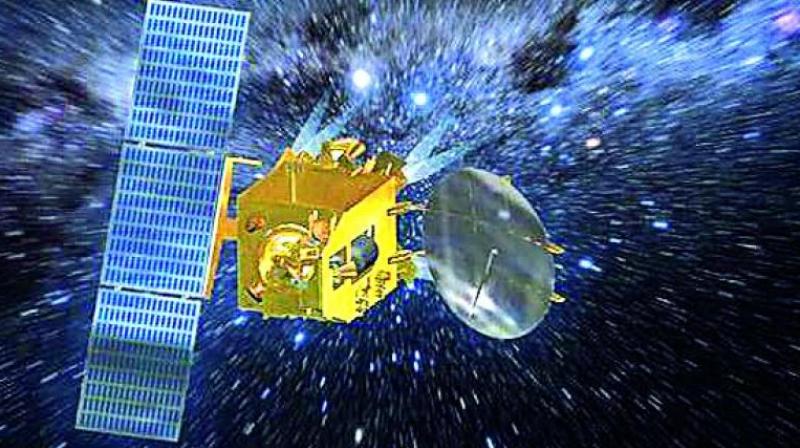ISRO scientists study Sun using Mangalyaan
The scientists utilised the solar conjunction event, when the Earth and Mars are on the opposite sides of the Sun

Nellore: A team of scientists from different units of ISRO used ‘S-band’ radio signals from Mangalyaan, the Indian Mars orbiter, to study the solar corona — the layer of the Sun that extends millions of kilometres into space — and located the area of the sun where the temperature rises abruptly.
The scientists utilised the solar conjunction event, when the Earth and Mars are on the opposite sides of the Sun, that occurred in May-June 2015 for the study. The Sun's activity was low at that time.
During conjunction events, which happens once in two years for Mars, the radio signals from Mangalyaan pass through the solar corona — about 10 solar radii or about 69,57,000 km from the centre of the Sun. This provides scientists a unique opportunity to study solar dynamics. Each solar radii is about 6,95,700 km.
The scientists involved in the study were from Space Physics Laboratory of Vikram Sarabhai Space Centre, Thiruvananthapuram; Physical Research Laboratory, Ahmedabad; and ISRO Telemetry Tracking and Command Network (ISTRAC), Bengaluru.
The results were published in the journal Monthly Notices of the Royal Astronomical Society by the authors of the study Richa N. Jain, R.K. Choudhary, Anil Bhardwaj, Umang Parikh, Bijoy K. Dai, and Roopa M.V.
According to the study, the scientists found that the transition of solar wind — charged particles released from the upper atmosphere of the Sun — from slower speeds to higher velocities (technically sub-alfvenic to super-alfvenic flow) occurs in a region that is 10 to 15 times the solar radii (69.6 lakh km to about 104.4 lakh km) from the centre of the Sun.
The Sun’s surface is a few thousand degree Kelvin (a unit of measurement of temperature, like the Celsius) while in the outer atmosphere, the solar corona, the temperature rises to several million degrees Kelvin. Why this happens is not known.
It is important to study the corona since it passes through the interplanetary spaces, and affects the near-Earth space environment through a phenomenon known as space weather.
The Mangalyaan radio signals that crossed through the plasma (ionised medium) in the solar corona during the conjunction event experienced dispersive effects. The turbulence was recorded at the Indian Deep Space Network for Mangalyaan, at Isrtrac (Isro Telemetry, Tracking and Command Network).
Analysing the signals, the scientists reported that they obtained coronal turbulence spectrum at between four and 20 solar radii (27.8 lakh km to 139.1 lakh km from the centre of the Sun. This is the region where the solar wind primarily gets accelerated.
The scientists found that the turbulence power spectrum at a smaller distance from the Sun’s centre — of less than 10 solar radii — had flattened at shorter frequencies, which corresponds to the solar wind acceleration region.
For larger distances from the Sun’s centre — more than 10 solar radii — the curve becomes much steeper. The scientists reported that this finding is consistent with theoretical models of solar wind turbulence.
The scientists said the finding was also supported by the first direct observation of solar corona by the Parker Probe, Nasa's first-ever mission to "touch the Sun”, recently.

